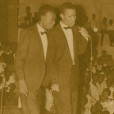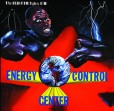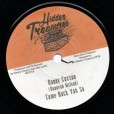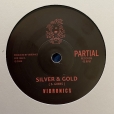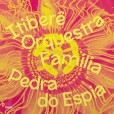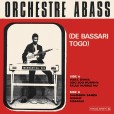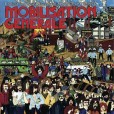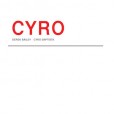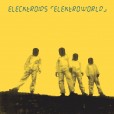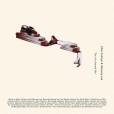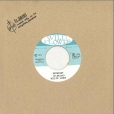Your basket is empty

A second helping as sublimely pleasurable as the first, with Prince Buster, Rupie Edwards, Derrick Harriott, Dobby Dobson and Joe Higgs amongst the singers.
‘Enthralling to anyone,’ according to The Guardian.
Brainy but intensely pleasurable piano-saxophone/clarinet duets; judiciously allusive, searching and rigorous.
Ortiz is a protégé of Muhal Richard Adams whose playing riddles Noncarrow with rumba, Messiaen with Monk, Yancey with yambu. Don Byron is a favourite of ours way back to Tuskegee Experiments and his revival of Mickey Katz.
The opening tribute to Catalonian jazz pianist Tete Montoliu — who smuggled flamenco into post-bop — is twinned with something from Musica Callada, by Federico Mompou, a kind of Catalonian Satie. (“The complexity of simplicity,” Ortiz calls it. “Mompou’s music doesn’t land the way we expect it to, and the resolution is like a door to what’s happening next. Mompou’s pieces have a lot of these doors, and they give a lot of space to creativity.”) There are interpretations of Black And Tan Fantasy (by way of Thelonious Monk Plays Duke Ellington), Benny Golson’s Along Came Betty and Geri Allen’s Dolphy’s Dance; and a luminous arrangement of a Bach violin partita for solo clarinet. Byron chips in compositions dedicated to Lorraine Hansberry and Andy Capp; Ortiz some twelve-tone serialism and a tune based on ‘the triangular relationship within a series of three notes’.
Invigorating music; brilliantly recorded.
Precious, timely, moody reflections on migrating from Côte d’Ivoire to Moss, in Norway, over ruff breakbeat funk supplied by the nimble bass-playing of Maimouna’s old man (from Kambo Super Sound), and the expert conga and kit-drumming of Stliletti-Ana (from Jesse, in Helsinki). Even in their delirium, b-boys and girls will savour traces of the Incredible Bongo Band, in the chorus. Over the eight minutes, and going deeper on the flip, the mix lifts off into a cosmic steppers dub, featuring Gilb-r alongside Sotofett on keyboards, with no let up for the dancefloor in energy and vibes.
“It was in 2001 / I got the letter / A letter that said / I would travel to a cold world / Not knowing what would happen / I was full of loneliness / No country / Everyone was different / Not only skin colour / The way people spoke / The way people behaved / That’s the adventure / Obey / This is the story we’re told / The key to success / So we can do everything for our parents / Who need us / Desperate for a better life / That’s the adventure.”
Three knockout EPs, in hand-stamped, poly-lined sleeves.
Lovely singing by the Hombres over a limber, spaced-out Upsetters rhythm you could listen to for hours. The dub attenuates the political reasoning with cruel brilliance.
The genre-slaying, polyharmonic, polyrhythmic ‘universal music’ of Hermeto Pascoal and his bassist Itibere Zwarg, performed in 2001 by a workshop comprising twenty-nine of Rio de Janeiro’s most exceptional young musicians.
An overlooked masterpiece amongst recent Brazilian recordings: invigorating and marvellous; warmly recommended.
Multi-reedist Tony Coe was born in 1934, four years after guitarist Derek Bailey. He cut his teeth as a career jazzman with Humphrey Lyttleton, before an extended stint with the Kenny Clarke/Francy Boland Big Band. On this rare 1979 duo outing, he sticks to clarinet. And though that instrument has an illustrious jazz pedigree, Coe’s playing here is something else.
It’s worth noting that the clarinettist has also played under the baton of arch-modernist Pierre Boulez, the kind of composer Derek Bailey enjoyed taking to task in his book Improvisation. You might think the Frenchman’s uncompromising serialism and the free playing Bailey defended with such passion all his life would have little in common, yet both men were hugely influenced by Anton Webern. It’s an influence you can hear right through Bailey’s career in his obsessive exploration of tight parcels of registrally-fixed pitches, notably those trademark ringing harmonics. Meanwhile, Coe’s meandering semitones and sinuous arabesques here recall both Boulez’s clarinet writing in Domaines, and the harmonic world of Boulez’s own teacher Olivier Messiaen.
Still, no traditional classical musical notation could ever render the extraordinary rhythmic subtlety and timbral complexity of this music. It’s at one and the same time dazzlingly virtuosic — Coe and Bailey are on stellar form throughout, and have enough sense to, yes, accompany each other where needs be — and supremely lyrical and spacious.
An absolute delight.
Another knockout compilation by Born Bad (though Souffle Continu has the matter in hand).
‘In 1969, the Art Ensemble of Chicago arrived at the Théâtre du Vieux Colombier in Paris and a new fuse was lit. Their multi-instrumentalism made use of a varied multiplicity of ‘little instruments’ (including bicycle bells, wind chimes, steel drums, vibraphone and djembe: they left no stone unturned), which they employed according to their inspirations. The group’s stage appearance shocked as well. They wore boubous (traditional African robes) and war paint to venerate the power of their free, hypnotic music, directly linked to their African roots. They were predestined to meet up with the Saravah record label (founded in 1965 by Pierre Barouh), already at the vanguard of as-yet unnamed world music. Brigitte Fontaine’s album Comme à la Radio, recorded in 1970 after a series of concerts at the Théâtre du Vieux Colombier, substantiated the union of this heiress to the poetic and politically committed chanson francaise (Magny, Ferré, Barbara) together with the Art Ensemble of Chicago’s voodoo jazz and the Arab tradition perpetuated by her companion Areski Belkacem…’
When Cyro Baptista moved to New York in 1980 from his home city of São Paulo, he brought with him an arsenal of percussion instruments, including the cuica (friction drum), surdo (the booming bass drum associated with samba), berimbau (single-string bow with resonating gourd), and cabasas galore, in the next few years deploying them most notably in numerous ensembles curated by John Zorn, who helped set up this studio session in 1982.
As you might expect from someone whose infectious grooves have graced the work of Herbie Hancock, Astrud Gilberto and Cassandra Wilson, Baptista expertly fires off cunning polyrhythms, even traces of thumping samba, with restless fluency. Bailey the wily old fox skirts and eschews the bait, which is quickly conjured away and newly fashioned. The guitarist homes in on the delicious squeaks of the cuica and the twanging drones of the berimbau with truly awesome tonal precision. You could sing along if you wanted, after a caipirinha or two. And he gets almost as many different sounds from his instrument as Baptista can from his kit – check out the stratospheric plings and string-length fret-sweeps of Tonto, which sound more like a prepared piano than an acoustic guitar.
Wonders abound, from the berimbau/bent-string exchanges that open Quanto Tempo to the delightful collision of howling cuica and spiky bebop on Polvo, and the spare, preposterous Webernian samba of Improvisation 3.
These days, ‘improvisation’ often appears without its customary qualifier ‘free’. If there were ever a case to be made for its reinstatement, this album is the best supporting evidence. Freedom means you’re free to get into the groove, free not to, free to play with each other, free to play against each other. Sometimes frustrating, even scary, but more often than not in the hands of these two great masters it’s hilarious, exhilarating and utterly irresistible.
Saxophonist Phillipe Maté has played with the Acting Trio, Jef Gilson and Butch Morris, amongst others; and that’s him on Jean-Claude Vannier’s brilliant L’Enfant Assassin Des Mouches. As the recording engineer of BYG, Daniel Vallancien worked alongside Anthony Braxton, Don Cherry and Sonny Sharrock; for Saravah he recorded Brigitte Fontaine and the Cohelmec Ensemble. From 1972, this free-form saxophone/electronics collaboration is another bonafide classic of the French musical underground, revived with characteristic panache by Souffle Continu.

